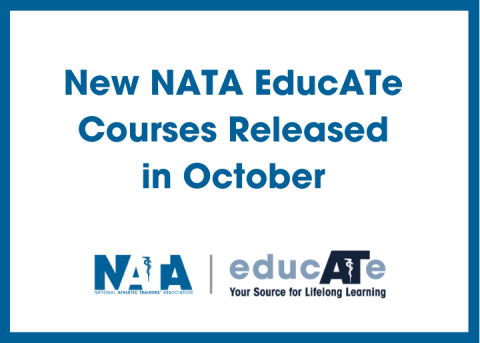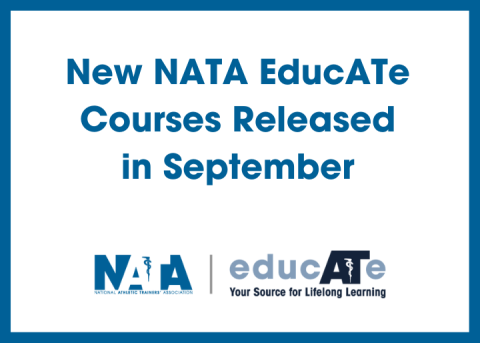
Throughout the history of athletic training, the college/university, higher education, professional sports, secondary school and various emerging settings have become home to athletic trainers wanting to care for all active populations. The impact of these ATs has helped their patients remain active and healthy in work, life and sport.
In honor of National Athletic Training Month this year, the March NATA News featured nine athletic trainers who are providing care to a variety of patient populations. They shared what drew them to the athletic training profession and their particular setting. They also shared how the AT’s essential skill set showcases this year’s NATM theme, “There’s an AT for That.”
Continue reading to learn more about NATA Ethnic Diversity Advisory Committee District Four Rep. Samar Long, EdD, AT, ATC, and her athletic training journey in the higher education setting.
Why are you passionate about your patient population/setting?
I love observing the growth of athletic training students as they develop their own professional identity. Students have a short period of time to be introduced to the many aspects of the profession and determine the starting point for their careers. Through my connection to students and preceptors, I can guide students along their professional journey as they establish boundaries, discover areas of strength, and determine what they are most passionate about within the field.
Tell us about your most memorable day on the job.
The best day of every year is commencement because everyone is so full of joy and able to soak in their hard-earned accomplishments. Seeing students’ that you met during admissions interview a few years earlier, walk across the stage and celebrate with family and friends is always my favorite experience to enjoy with students.
How have you advocated for your position and the athletic training profession throughout your career?
I have engaged in professional service at the state, region and national levels through volunteer committees and various initiatives. Giving your time to be part of conversations that impact your profession is important and has allowed me to meet so many wonderful clinicians who care about the future of athletic training. Through service, I have had opportunities to speak with legislators regarding state practice act revisions as well. I also am involved in college and university level interdisciplinary committees that allow athletic trainers to have a voice among other health professions.
Reflecting this year’s theme of “There’s an AT for That,” if you had to pick one essential skill ATs bring to all settings, what would it be?
Adaptability would be a skill I think ATs exhibit very well. Many of the other health professions are a lot more consistent in daily roles and responsibilities and not as comfortable adjusting on a moment’s notice. It is critical to adjust to the needs of a patient, environment or specific situation and not be reliant on following an algorithm or one prescriptive way of doing things.
How are you celebrating National Athletic Training Month this year?
I want to increase the promotion of NATM among faculty, staff and students by working on a social media thank-you campaign. The focus will be on recognizing the ATs we know and love for all the big and small things that are often overlooked. My hope is for the month to be an outpouring of appreciation for a group that is always thinking of others.





